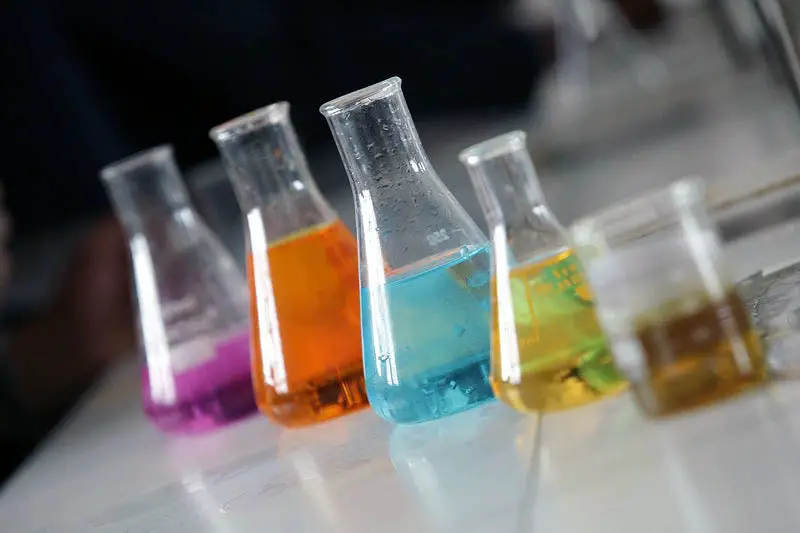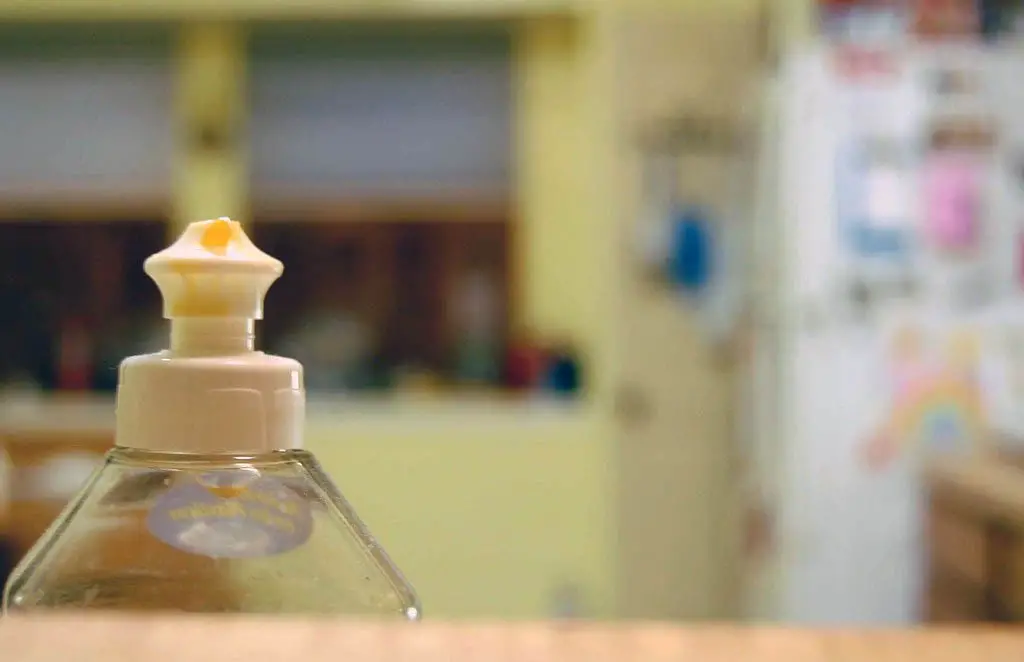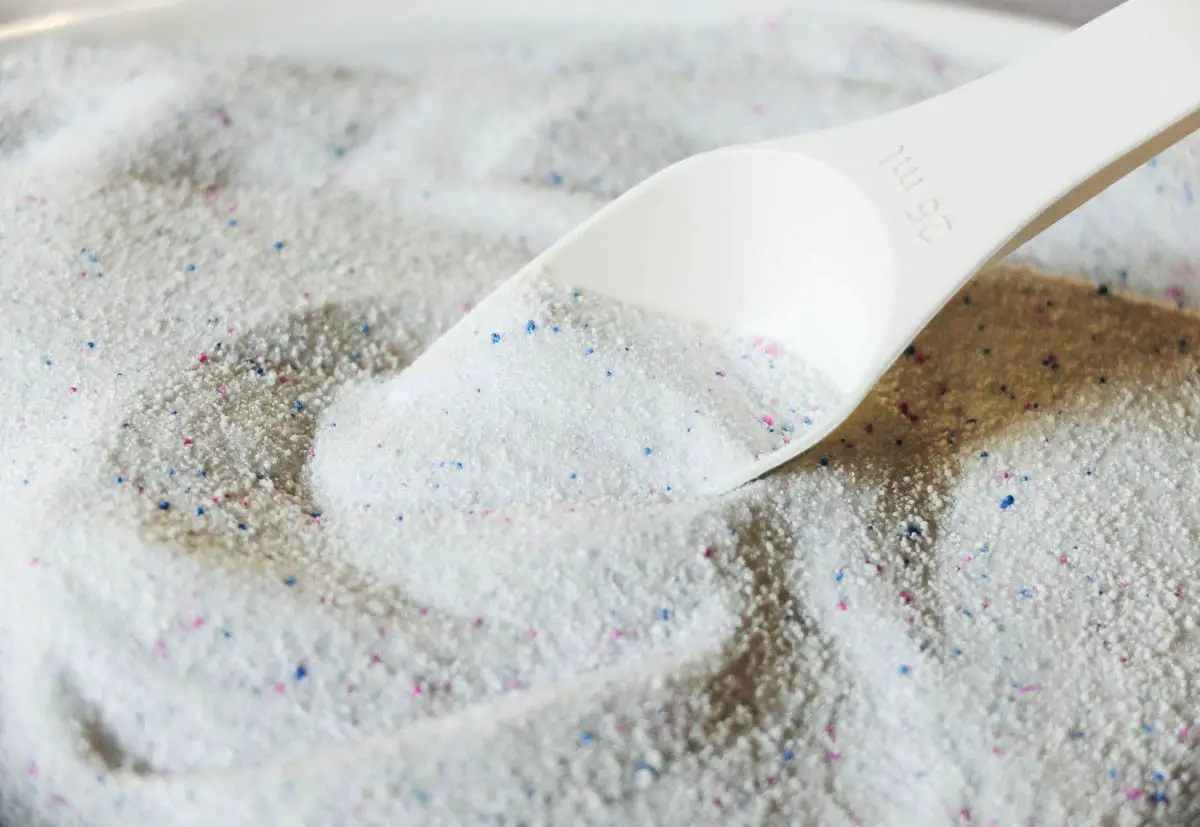Dish soap is also known as dish detergent, dishwashing soap, or Dishwashing liquid. We use dish soap to wash dishes, glasses, and other utensils. Not to mention that it is a cleaning agent consisting of a mixture of detergent and water.
Now, as a regular user of this cleaning agent, you may want to know what is the dish soap chemical formula? Well, dish soap usually consists of a mixture of water, detergents, and surfactants.
In reality, these surfactants help in the foaming action and breakdown of the fatty and greasy substances attached to the dishes, utensils, and glasses.
In this article, we will explain how manufacturers make dish soap and what its chemical formula is.
Dish Soap Chemical Formula
Detergents are the main active ingredients in dish soap, and the main ingredient is water. However, other stabilizing and thickening agents are surfactants, fragrances, dyes, preservatives, salts, and hydro trope.
What Is The Chemical Equation For Soap?
The chemical equation for soap is sodium stearate or C17H35COONa. Manufacturers make dish soap by combining fat or oils with lye or sodium hydroxide (NaOH). Since Sodium hydroxide (NaOH) is a strong base, it reacts with the carboxyl group in the fatty acids.
In addition, Fatty acids contain a carboxyl group and an organic hydrocarbon chain. As a result, the combination becomes soap and an alcohol compound called the ‘dietary fatty acid,’ glycerol, and other by-products such as salts of fatty acids.
What Is The Chemical Composition Of Dish Soap?
The main ingredients in dish soap are surfactants, water, and detergent. However, the amount of each ingredient can vary depending on the brand.
Now, what is chemical formula of soap? The chemical composition of dish soap is 0.63 percent sodium hydroxide (50 percent solution), 0.77 percent sodium chloride, 1.2 percent cocamide DEA (Pilot’s Calamide C), 2.4 percent DDBSA (Pilot’s Calsoft LAS-99), 95 percent water, and other dyes and preservatives as necessary.
However, the main surfactants in dish soap are sodium lauryl sulfate and Sodium Laureth Sulfate. Additionally, it’s also common to find these ingredients: Glyceryl Monostearate, Propylene Glycol, and Triethanolamine.
What Elements Are in Dish Soap?
There are three main ingredients in dish soap: surfactants, detergents, and water. But, each of these ingredients has a different composition. However, the most common surfactant is sodium lauryl sulfate and Sodium Laureth Sulfate.
But, what are surfactants? Surfactants are chemicals that help to reduce the surface tension between water and oil. And, they do this by making chemical bonds with both types of molecules and, breaking down their bonds.
As a result, this reduces the amount of oil that can be adsorbed on the surface of particles. After that, the water cleanses the dishes easily.
Additionally, the other dish soap elements are glycerin, C10-16 Alkyl dimethylamine oxide, sodium citrate, lauryl glycoside, vinegar, citric acid, plant-based buffer, and essential oil.
What Chemicals Are In Liquid Soap?
Various chemical compounds make up liquid dish soap. However, these dishwashing liquid chemical name are:
Sodium Lauryl Sulfate
It works as a foaming agent to create foam. Besides, Sodium Lauryl Sulfate also functions as a foaming agent in many liquid soaps, including shampoo and bath bubbles since it is cheap and effective.
Sodium Hydroxide
This chemical with the symbol NaOH acts as a cleansing and thickening agent in liquid soap. Also, in the soap industry, it is known as lye.
Potassium Hydroxide
The chemical, with the symbol KOH, is an alternative to NaOH and is also known as caustic potash.
Sodium Triphosphate
This substance functions as a cleaning and thickening agent.
Hydroxyethyl Cellulose
It is a type of sugar that acts as a thickening and cleaning agent in liquid soap.
Sodium Carbonate
Soda crystal, also known as soda ash, is a water-soluble sodium salt having the formula Na2CO3. Soda ash is also a thickening and cleaning ingredient found in liquid soap.
Glycerol
This is a non-toxic, colorless, and odorless chemical. It acts as a moisturizer in liquid soap.
What Is the Main Ingredient In Dish Soap?
The main active ingredient in dish soap is detergent, and water is the main ingredient. However, the most common active ingredient in commercial dishwashing detergents is sodium lauryl sulfate. Additionally, other additives such as fragrances, wetting agents, and coloring agents are also used here.
What Is bio soap?
A bio soap is a cleaning product that gradually breaks down over time. As a result, when campers, backpackers, and hikers need to wash or clean their goods, using these soaps will help in reducing environmental impact.
Additionally, bio soaps are very popular among hikers and backpackers as it is more cost-effective than newer laundry products.
How Do You Make Bio Detergent?
Bio detergents are those which contain enzymes. These enzymes help break down starchy, greasy, and fatty substances significantly.
However, if you want to make bio-detergent, you will need some ingredients. Each ingredient has a different purpose as follows:
- To remove stains, you will need 150 grams of washing soda.
- For effective cleaning, you will need 100-gram curd soap.
- Baking soda (150 grams) helps in removing bad odors.
- Essential oils to add fragrance to the detergent.
- To remove stubborn stains, you will need bile soap.
- Citric acid (100 gram) powder has decalcifying properties and a mild bleaching effect.
Besides, you will need to add water to create liquid washing detergent.
Steps to Make your bio detergent:
- First, grate the curd soap into fine flakes using a Grater.
- Then, in a clean bowl, mix all of the ingredients.
- Finally, store the bio detergent in a clean jar.
FAQ
What enzymes are in dish soap?
There are a number of enzymes present in dish soap, including cellulases, proteases, amylases, mannanases, and lipases —each provides distinct advantages for use in automatic dishwashing and laundry. But, their main function is to help break down food substances that get stuck to dishes and other surfaces.
Do detergents contain enzymes?
Yes, Bio detergents often contain enzymes to aid in the breakdown of food material that gets stuck to dishes and other surfaces.
Especially, Lipase and protease enzymes, both of which are used in biological laundry detergents.
Lipases break down oils and fats, while proteases degrade protein chains. However, Non-bio detergents do not contain any enzyme.
Dawn dish soap chemical formula
There are multiple ingredients in Dawn dish soap. These are Sodium Lauryl Sulfate, Water, Sodium Chloride, Alcohol Denat, Lauramine Oxide, Sodium Laureth Sulfate, Fragrance, Methylisothiazolinone, Triclosan, Phenoxyethanol, Propylheptyl Ether, PEG-8 PEU-14 PEG-10/PPG-7 Copolymer and PPG-26.
Dishwashing soap chemical formula
Most dishwashing soaps are made up of a chemical formula consisting of the soap base (C17H35COONa) and one or more surfactants. But, the most common surfactant in dishwashing soap is sodium Laureth sulfate, which helps to suspend dirt and grease in water.
Verdict
Dish soap is a very important item for a kitchen. It effectively removes stains, dirt, and greases from pans, pots, and dishes. But, the effectiveness of dish soap depends on its chemical formula.
So, what is dish soap chemical formula? Surely you have the answer now. A dish soap usually consists of detergent and water.
Detergent is the active ingredient of dish soap, and water is the main ingredient. A detergent is a mixture of surfactants or only a surfactant. These surfactants have cleansing properties.
If you want to buy smelling dish soap you can read this article.



